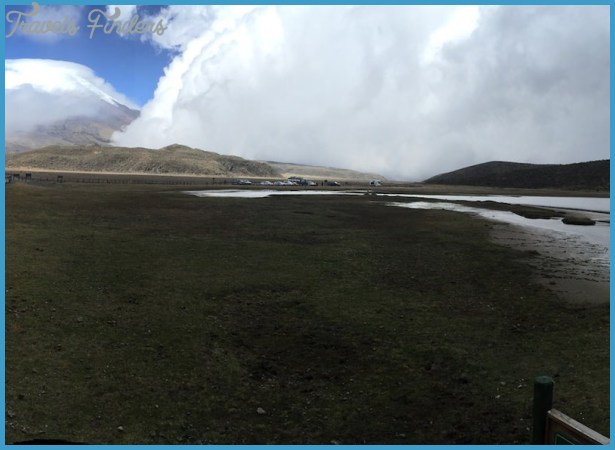Mate Caliente
Regardless of the season most adult Paraguayans start off the day with a few rounds of mate caliente. While water is heated, a recipient known as a guampa usually made out of wood or a hollowed out gourd, is filled about two thirds of the way with loose yerba mate and a straw shaped metal tea strainer known as a bombilla is added. Once hot, but not boiling, water is poured into the guampa, and the yerba is allowed to steep momentarily. The water is then sipped through the bombilla. Once drained, the guampa is passed to the server (known as the cebador) who refills it and hands it to the next member of the group. Each serving is known as a ha. There is usually enough water for each participant to get several has. Sugar is sometimes added to the water and medicinal herbs to the yerba itself. During the summer months, most drink mate caliente around dawn and then switch to terere as the heat sets in.
On cold winter days, a special treat called mate de coco is often prepared. Hot water is substituted with sweetened hot milk and yerba with shredded unsweetened coconut and some anise seed (this is particularly good when drunk with a guampa or bombilla made out of palo santo). Rich and comforting, mate de coco is Paraguay’s answer to a cup of hot cocoa.
Sidebar: Coffee addicts should note that Paraguayans generally get their morning caffeine buzz from mate, while coffee is often reserved for an afternoon pick me up.
Yerba Mate – From the Tree to the Guampa
The processed leaves of the yerba mate bush, related to the holly tree, have always been one of the country’s top exports. Historically, Paraguayan yerba mate commanded a premium price in foreign ports. In the past, yerba mate was harvested from the wild. Large camps were set up near wild areas of yerba trees known as yerbales, with the entire production process taking place on site. The Jesuits pioneered the idea of cultivating the yerba mate bush, a practice which was largely abandoned after their expulsion and only took hold once more in modern day Paraguay. Currently, the majority of yerba mate production plants are located in the Itapua province.
Though machinery and technology have been incorporated, very little has changed in the actual process of creating yerba mate since colonial times. Branches and leaves from the yerba mate bush are gathered and then dried. Nowadays, the drying takes place in specialized ovens, whereas before large wooden platforms were constructed for bundles of branches to hang under an indirect fire for days at a time. Once fully dried, the yerba is then ground to a coarse consistency before being packaged for transport to national and international markets. Historically, yerba mate was packaged for transport in large hides. Today, it is available in stores throughout the country in packages as small as half of a kilo to bulk bags as large as fifty kilos. Each yerba brand is slightly different than the next – some are bitter and strong, others are milder and come with medicinal herbs (these are referred to as yerba compuesta). Approximately 18,750 hectares of yerba are cultivated annually, resulting in over 30,000 tons of processed yerba mate. Pajarito, Selecta, and Campesino are the classics – bitter and strong. Kurupi, whose packaging depicts indigenous processing wild yerba mate, is a good bet for beginners, as is the more expensive but mild La Rubia. There is even an organic mate called Yerba Guayaki. The seemingly limitless variety of yerba brands and blends can seem daunting, but visitors will soon find a yerba mate to suit their tastes.
Terere
Cold and refreshing, terere is Paraguay’s secret weapon against the heat. Terere is often described as cold mate, a description that fails to convey the importance of the drink in everyday life and the myriad of rituals involved in its consumption. Aside from the temperature of the water, there are other differences between mate caliente and terere. The guampa is usually made of a hollowed out bull horn instead of a gourd. Palo santo guampas are also popular as they impart a distinct flavor to the terere. Medicinal herbs or yuyos are added directly to the water, rather than the yerba. Lemon is often added to the water to make it more refreshing. Though any jug will do, it has recently become fashionable to pour ice-cold terere water from a personalized leather-covered thermos. From the moment your lips touch the cool metal of the bombilla to when you feel the cold water fill your stomach, everything about terere is refreshing. Even the drops of water from a leaky termo are a welcome respite from the heat.
To some, the main deterrent to drinking terere is the fact that it is shared amongst several people. This is a real, though generally ignored, concern. For those who do not wish to step so far outside their comfort zone the easiest way to participate in the in the camaraderie of a terere circle is to offer to cebar or serve the terere. Traditionally this role is given to the youngest member of the circle (or the lowest on the pecking order) – they may thank you for relieving them of their duties! Ask the group for tips on how to properly cebar. There are rules and rituals for everything from bombilla placement to water pouring techniques, which everyone will enjoy explaining at length. Another way to politely decline terere is to claim you’ve recently consumed milk, citrus fruits, or watermelon. All are believed to cause upset stomachs if combined with terere.














